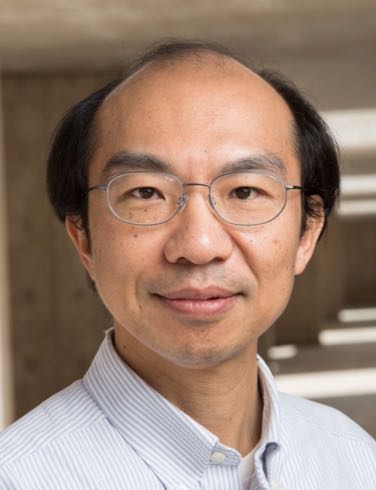Co-Located Conference AgendasLiquid Biopsies and Minimally-Invasive Diagnostics 2017 | RNA-Seq, Single Cell Analysis & Single Molecule Analysis 2017 | 

Thursday, 5 October 201708:00 | Conference Registration, Materials Pick-Up, Morning Coffee and Pastries | |
Session Title: Opening Session -- Emerging Themes in Single Cell Analysis |
| | 09:00 |  | Keynote Presentation Capturing Transcriptomes From Single Cell Nuclei
Roger Lasken, Director of Single Cell Genomics, J. Craig Venter Institute, United States of America
A method is presented for sequencing the transcriptome of a cell nucleus. Biological features of the nucleus are revealed including enrichment of certain transcripts and synthesis of precursors for non-coding RNAs. Current methods using protease dissociation of whole cells from tissue alters the transcriptome whereas nuclear transcriptomes are obtained without elevated temperature and harsh treatment. |
| 09:30 |  | Keynote Presentation Sorting, Isolation and the Non-Destructive Analysis of Single Cells
Abraham Lee, Chancellor’s Professor, Biomedical Engineering & Director, Center for Advanced Design & Manufacturing of Integrated Microfluidics, University of California-Irvine, United States of America
This talk will introduce two main technologies that integrate the upstream processing of samples, the sorting of targeted cell populations, the isolation of single cells and the ability to probe the single cells for genotyping while maintaining their viability for post-processing and cellular phenotype analysis. |
| 10:00 |  | Keynote Presentation Extracellular Vesicle Diversity in Biofluids and Implications for Biomarker Development
John Nolan, CEO, Cellarcus Biosciences, Inc., United States of America
Extracellular vesicles (EVs) are released by all cells and carry molecular cargo that can be delivered to nearby and distant cells to affect their function. Biofluids such as plasma contain EVs from many different cell types, and thus represent a rich source of potential biomarkers for liquid biopsy and other applications. However, progress towards this potential is slowed by the small size and heterogeneous nature of EVs found in various biofluids. We have been developing high resolution analysis methods to measure and characterize individual EV and classes of UVs to better understand their cellular source, molecular cargo, and potential destinations and functional effects. In this presentation I will highlight the potential roles of EV in biology, the challenges for their measurement, and new insights into the diversity of EVs revealed by new high resolution analysis methods. |
| 10:30 | Coffee Break and Networking in the Exhibit Hall | 11:00 | Quantitative Profiling of Large and Complex Single Cell Populations
Grace Zheng, Senior Scientist, 10x Genomics, United States of America
Understanding of complex biological systems requires the knowledge of their individual components. The ability to profile a large number of cells is becoming increasingly important for rare cell detection without complicated enrichment procedures, and for comprehensive classification of biological systems. However, existing single cell RNA-sequencing (scRNA-seq) methods have limited throughput, and computational analysis is not scalable.
The Chromium single cell system from 10x Genomics uniquely enables large-scale scRNA-seq studies. The updated microfluidics and biochemistry can capture >70% of loaded cells with a low doublet rate (<1% per 1000 cells), facilitating the profiling of precious and rare cell populations. 80k cells can be recovered in droplets per 7 min run, and the sequencing libraries can be made within 7 hours, enabling high sample and cell throughput. These libraries are compatible with the HiSeq4000 sequencer, currently the most cost effective sequencing platform provided by Illumina. The analysis pipeline, Cell Ranger, is optimized for efficient processing of sequencing data to produce per-cell gene expression matrices and an automated cell clustering analysis. | 11:30 | Towards Quantitative Mass Spectrometry Analysis of Live Single Cells Using the Single-Probe Device
Zhibo Yang, Assistant Professor, University of Oklahoma Health Sciences Center, United States of America
Recent developments in bioanalytical MS areas greatly depend on the advancements in sampling and ionization methods. We have developed a miniaturized multifunctional device, the Single-probe, for microscale bioanalysis. One of the important applications is to conduct quantitative analysis of compounds (such as anticancer drugs) inside live single cells. The Single-probe is fabricated by embedding within the dual-bore quartz needle with one fused silica capillary and one nano-ESI emitter. The tip size of the Single-probe is small enough (6-9 µm) to be inserted into a live eukaryotic cell for sampling. The sampled cellular compounds are immediately ionized along with an internal standard (such as deuterated drug), and detected by a mass spectrometer. The abundance of target molecules can be obtained from experimental results. | 12:00 | Networking Lunch in the Exhibit Hall, Meet Exhibitors and View Posters | |
Session Title: Single Cell and Single Molecule Analysis, circa 2017 |
| | 13:00 |  Characterizing Virus Infection Heterogeneity by Simultaneous Measurement of RNA Expression and Degradation Characterizing Virus Infection Heterogeneity by Simultaneous Measurement of RNA Expression and Degradation
Eric Clambey, Assistant Professor, University of Colorado — Anschutz Medical Campus
Virus-host interactions studied in bulk populations obscure cell-to-cell variation. Here we quantify RNA expression and degradation at the single-cell level during virus infection, combining a sensitive and robust fluorescent in situ hybridization platform with multiparameter flow cytometry and high throughput cell imaging. This strategy reveals heterogeneity of gene expression during virus infection in both prominent and rare cell populations.
| 13:30 |  Technology Spotlight: Technology Spotlight:
Identifying Minor Cell Populations from Single-Cell Nucleus RNA-Seq Data with Partek Flow Software
Paul Fullerton, Field Application Scientist, Partek, Inc.
Single-cell RNA sequencing (scRNA-Seq) shows enormous promise to expand our understanding of heterogeneous tissues and complex diseases. A major bottleneck in scRNA-Seq experiments is bioinformatic analysis of data sets with thousands of cells. This session demonstrates scRNA-Seq analysis in Partek Flow, a robust Next-Generation Sequencing data analysis platform with an interactive graphical user interface that does not sacrifice power, speed, or flexibility when compared with command-line tools. In this session, we analyze a recently published data set that classified cell types in the mouse brain using single-cell nucleus RNA sequencing from frozen mouse brain tissue (Habib et al., Massively parallel single-nucleus RNA-seq with DroNc-seq, Nature Methods, 2017). We extend the analysis performed in the manuscript, using Partek Flow tools, such as t-SNE and K-means clustering, to focus on minor cell populations.
| 14:00 |  | Keynote Presentation Coupling Photonic and Electrochemical Phenomena with Zero-Dimensional Nanofluidics
Paul Bohn, Arthur J. Schmitt Professor of Chemical and Biomolecular Engineering and Professor of Chemistry and Biochemistry, University of Notre Dame, United States of America
The relationship between functional states of redox enzymes and the macroscopically observed phenotype is of fundamental importance to the chemistry of life. However, despite their fundamental importance in basic biochemical phenomena, the direct electrochemical observation of single electron transfer events in biological systems has eluded us until the recent advent of bifunctional nanoelectrochemical-nanophotonic nanopore arrays. High density recessed dual-ring electrode nanopores moderate the interaction between single electron-transfer events and fluorescence emission, in the zeptoliter optical confinement volume of a zero-mode waveguide (ZMW). The dual optical-electrochemical functionality makes it possible to perform single molecule spectroelectrochemical measurements under redox cycling conditions – both when the upper electrode is potential-controlled and using self-induced redox cycling. Single molecule cycling behavior is evidenced in the fluorescence dynamics. Capture efficiencies are characterized as a function of the potential applied to the upper ring electrode, and single molecule electrochemical-spectroscopic cross-correlation measurements are performed as a function of nanopore occupancy down to <n> ~0.001. |
| 14:30 |  | Keynote Presentation Node-Pore Sensing: A Versatile, Label-Free Method for Screening Single Cells
Lydia Sohn, Almy C. Maynard and Agnes Offield Maynard Chair in Mechanical Engineering, University of California-Berkeley, United States of America
Flow cytometry is one of the cornerstones of biomedical research and clinical diagnostics. With its ability to screen individual cells for multiple protein epitopes simultaneously and subsequently identify sub-populations of cells, flow cytometry has had a profound impact in a broad range of areas including immunology, cancer, and regenerative medicine. While the current state of-the-art is 18 parameters, flow cytometry is often “practically” limited to 6-10 parameters, as emission spectral overlap is of concern and highly complex analysis to decouple such overlap is needed. We have developed a rapid, label-free method of screening cells for their phenotypic profile, which we call Node-Pore Sensing (NPS). NPS involves measuring the modulated current pulse caused by a cell transiting a microchannel that has been segmented by a series of inserted nodes. When segments between the nodes are functionalized with different antibodies corresponding to distinct cell-surface antigens, cell surface-marker identification can be achieved. When a “contraction” channel through which cells can squeeze is included between the nodes, mechanical phenotyping is possible. In this talk, I will demonstrate the versatility of NPS and discuss its potential clinical applications—from phenotyping acute myeloid leukemia patient samples to early breast-cancer detection. |
| 15:00 | Single-Cell Dissection of Gene Transcription Regulation Networks that Control Cell Cycle Decisions and Cell Fates after DNA Damage
Bart Westendorp, Assistant Professor, Faculty of Veterinary Medicine, Utrecht University The Netherlands, Netherlands
The faithful replication of DNA during each cell division is essential, because uncorrected DNA errors can severely disturb cell function and ultimately lead to cancer. In response to DNA damage mammalian cells have a variety of mechanisms to either repair DNA, enter alternative cell cycle fates, or undergo programmed cell death. Individual cell fate thus depends on the decision which of these mechanisms is activated. Using a combination of single-cell RNA-sequencing and live cell imaging, we are now able to investigate in unprecedented detail how cells coordinate the transcriptional response to DNA damage. We begin to understand which gene regulation networks determine cell fates and therapy resistance of cancer cells. | 15:30 | Coffee Break and Networking in the Exhibit Hall | 16:00 |  Technology Spotlight: Technology Spotlight:
Revolutionizing Single Cell Research with High Throughput Single Cell RNA-Seq
Muriel Breteau, Technical Applications Specialist, Dolomite Bio
Analyzing single cells has enabled researchers to understand the complexity of biologic systems and gain vital information and data which is key to understanding many diseases and immunity. However, until recently, methods involved bulk analysis, causing vital information at the single cell level to be lost.
With the emergence of scRNA-Seq, this has offered an exciting, cutting edge technique that for the first time gives unprecedented insight into the expression of thousands of single cells. This method has revolutionised the way we analyse single cells and enables additional understanding into tissues at the level of individual cells.
This presentation will investigate:
- Current methods to perform single cell RNA-Seq including the effective use of microfluidic droplet technology to enable access to the transcriptome of thousands of single cells in a high throughput manner
- Advantages and benefits of using the drop-seq protocol for scRNA-Seq
- The development of new protocols and application using flexible single cell tools including profiling natively paired TCRs, isolating antibody coding sequences, encapsulating cells in hydrogels or encapsulating expression libraries for FACS sorting
| 16:30 |  Technology Spotlight: Technology Spotlight:
Isolation and Capture of the Single Cell
Dan Lucking, Director of Sales, US, Molecular Machines & Industries (MMI)
Technology is making it easier and faster for researchers to identify single cells or other areas of interest from live cell cultures, tissue sections, and other types of samples and cell populations. We’ll walk through an introduction of two of these technologies, laser micro-dissection and an automated capillary based method. You’ll see how a researcher can get very particular about what cells he/she wants for downstream analysis and how to capture them with the click of a mouse. You’ll have the opportunity to see videos made using actual customer samples (tissue on slides and live cells in plates) to get a real sense of how individual cells of interest were collected and organized.
| 17:00 | .gif) Technology Spotlight: Technology Spotlight:
Automated Single-Cell Isolation and Dispensing Technology For Rare Cell Samples
Guilhem Tourniaire, Scientific and Managing Director, Cellenion
A revolutionary single-cell isolation and dispensing technique allowing unmatched precision and recovery will be presented. This automated method is tailored toward preparation of samples containing few or rare cells prior to their analysis.
| 17:30 |  Technology Spotlight: Technology Spotlight:
The Celsee™ PREP Platforms: Simplified Rare Single Cell Capture and Isolation
Kalyan Handique, CEO & President, Celsee Diagnostics
The ability to capture rare cells of interest from heterogeneous cell suspensions or blood and to individually characterize them has, historically, been technically challenging with a significant time and financial commitment. In this presentation, Celsee Diagnostics will discuss the Celsee PREP100 and the Celsee PREP SingleCell platforms that use streamlined, simplified microfluidic technologies to detect, enrich, and characterize rare cell populations and individual cells. The starting specimen is passed over a microfluidic chip containing tens of thousands to hundreds of thousands of individual capture wells. Cell size and morphology define which cells are captured – no fluorescent probes are needed. Three optional analysis paths exist for captured cells: on-chip immunochemistry, DNA or mRNA FISH assays, the cells retrieved for off-chip characterization including PCR, NGS and culture, or individual single cells can be isolated and retrieved.
| 18:00 | Networking Cocktail Reception with Beer, Wine and a Light Dinner. Engage with Colleagues and Discuss Collaborations and Partnerships | 19:30 | Close of Day 1 of the Conference | 19:30 | Start of Dinner Short Courses [Separate Registration Required] |
Friday, 6 October 201707:00 | Morning Coffee, Breakfast Pastries, and Networking in the Exhibit Hall | |
Session Title: RNA-Seq, Single Cell Analysis and Transcriptomic Mapping |
| | 07:30 | High-Resolution Lineage Mapping of Myogenesis in vivo
Ermelinda Porpiglia, Life Science Research Associate, Stanford University School of Medicine, United States of America
Muscle regeneration is a dynamic process during which the state and identity of the cells involved changes over time. Adult muscle stem cells are the driving force in skeletal muscle repair and regeneration. Mostly quiescent in healthy individuals, they become activated in response to muscle injury. While the phenotypic identity of muscle stem cells has been previously established, muscle progenitor cells, which are at a stage in between the stem cell and the mature functional myogenic cell, have not yet been identified in vivo. Progenitor cells hold enormous potential as a platform to study the cellular behavior and molecular control of stem cell fate, to identify novel therapeutic targets for muscle diseases, and to develop cell therapy applications for regenerative medicine. However, a major roadblock in their identification has been a lack of tools to resolve cellular heterogeneity in skeletal muscle, underscoring the importance of single-cell studies. We have capitalized on single-cell mass cytometry (CyTOF), a transformative technology that allows the discovery of novel subsets within a complex cell population, to capture stem cell fate decisions in vivo. We discovered novel cell surface markers that define a myogenic progression in vivo, by combining a high-throughput flow cytometry screen with CyTOF analysis of skeletal muscle. Importantly, using new marker sets we identified stem cells and previously unrecognized progenitor cell populations. We showed by lineage tracing experiments that these progenitor populations originate from muscle stem cells and exhibit distinct regenerative potential in vivo. Moreover, high dimensional CyTOF analysis in response to acute injury revealed the cellular and molecular dynamics of muscle regeneration at a level of resolution not previously possible. | 08:00 | Microfluidics Trapping System For Cell Manipulation and Analysis
Lidong Qin, Professor and CPRIT Scholar, Houston Methodist Research Institute, United States of America
Pengchao Zhang, Research Fellow, Houston Methodist Research Institute, United States of America
Cellular and molecular assays, especially in the study of phenotype-genotype correlations at the single-cell level, are critical for the understanding of intratumor heterogeneity and identification of cancer phenotype-related genes, new cell subsets, and assist in cancer prevention, diagnosis, and therapy. Traditional technologies for single-cell manipulation and analysis are plagued by operational complexity, limited efficiency, and low-throughout. Integrated microfluidics devices have become a robust technique for single-cell manipulation. By the rational design of microfluidics platforms, we can achieve rapid and high-throughput cellular and molecular assays, including (1) single cell based analysis such as Block-Cell-Printing for live single-cell printing, Single-Cell Pipette for convenient single-cell isolation, and yeast chip for high-throughput analysis of yeast replicative aging, (2) double cells based assay such as vertical cell pairing for high-resolution imaging of the immunological synapse, and (3) CRISPR/Cas9 based genome editing for hard-to-transfect cells. | 08:30 |  | Keynote Presentation Mapping RNA-RNA Interactome and RNA Structure in vivo
Sheng Zhong, Professor of Bioengineering, University of California-San Diego, United States of America
The pervasive transcription of our genome presents a possibility of revealing new genomic functions by investigating RNA interactions. Current methods for mapping RNA-RNA interactions have to rely on an “anchor” protein or RNA, and often require molecular perturbations. Here we present the MARIO (Mapping RNA interactome in vivo) technology to massively reveal RNA-RNA interactions from unperturbed cells. We mapped tens of thousands of endogenous RNA-RNA interactions from mouse embryonic stem cells and brain. We validated seven interactions by RNA antisense purification and one interaction using single molecule RNA-FISH. The experimentally derived RNA interactome is a scale-free network, which is not expected from currently perceived promiscuity in RNA-RNA interactions. Base pairing is observed at the interacting regions between long RNAs, including transposon transcripts, suggesting a class of regulatory sequences acting in trans. In addition, MARIO data reveal thousands of intra-molecule interactions, providing in vivo data on high-order RNA structures. |
| 09:00 | Single Cell Sequencing and Ovarian Cancer Heterogeneity
Timothy K. Starr, Assistant Professor, University of Minnesota, United States of America
Our research focuses on understanding the genetic complexity of high grade serous ovarian cancer with the goal of using this knowledge to guide therapy. We have analyzed gene expression levels from primary ovarian cancer epithelial tissue using single cell sequencing technology. We will present our initial findings as well as our ongoing efforts to define the heterogeneity present in ovarian cancer. | 09:30 | Single-cell Molecular Analysis of Cancer
Jiang Zhong, Assistant Professor, University of Southern California, United States of America
| 10:00 | Integrated Optofluidic Platform for Single Bioparticle Analysis
Holger Schmidt, Narinder Kapany Professor of Electrical Engineering, University of California-Santa Cruz, United States of America
We have developed an optofluidic platform that integrates biological sample preparation and optical single molecule analysis on a chip. I will describe the principle of the platform based on liquid-core optical waveguides and a broad range of capabilities that are enabled by this approach. These include the fluorescence analysis of single nucleic acids for amplification-free detection of Ebola infection as a new paradigm for molecular diagnostics with ultrahigh sensitivity and dynamic range. I will also describe multiplexed target detection with multi-mode interference waveguides for identification of single influenza viruses. The expansion of optofluidic capabilities through hybrid integration via nanopore-based electrical detection and integrated sample processing will be discussed. | 10:30 | Coffee Break and Networking in the Exhibit Hall | 11:00 | Droplet Barcoding for High Fidelity Single Molecule Sequencing
Naiwen Cui, Researcher, David Weitz Research Group, School of Engineering and Applied Science, Harvard University, United States of America
Single molecule High Fidelity Sequencing achieved by combining Drop-Based Microfluidics and Hydrogel Barcoded Bead technology. It enables accurate identification of single molecule, significantly reduce the background noise and thus achieve identification of true minor variant in heterogeneous mixtures of nucleotides. | 11:30 | Molecular Digitized Cytometry for Drug Screening
Tania Vu, Associate Professor, Oregon Health and Science University, United States of America
Digitized cytometry is a new approach that improves the detection and localization of proteins that are at low abundance but challenging to measure, especially in single cells. I will show how this principle is translated to a functional cytometry platform and its application for identifying drugs and their target effectiveness. | 12:00 |  | Keynote Presentation Single Cell Analysis For Personalized and Precision Medicine
Yu-Hwa Lo, Professor, University of California San Diego, United States of America
Single-cell analysis promises to unveil the underpinnings of biological processes that have evaded detection because it enables sensitive and accurate quantification of single-cell properties amidst biological samples with known, but difficult to quantify, heterogeneity (e.g. cancer stem cells in tumor tissue). In the era of personalized and precision medicine, increasing evidence has shown the critical roles of “significant minorities” as they are often responsible for drug resistance, metastasis, and activation/suppression of immuno-response while the unique characteristics of these minority cells are masked by measurements of ensemble average. With the rapid advances in high throughput assays and genomic analyses including qPCR and next generation sequencing technologies, the idea of studying individual cell properties is now within reach. However, there still exist substantial technological challenges to produce single cell assays to unleash its full potential for applications in biomarker discovery, drug design, and precision and personalized medicine. What is missing in today’s single-cell assays is a high-throughput, hierarchical and rational cell selection and screening process to determine “what type of cells” are of biological and pathological significance and therefore worth detailed genomic analysis: the phenotype-genotype problem. Another blind spot for today’s single-cell assays is that few single-cell assays can relate cell secretion phenotype to genomic analysis even though it is widely recognized that cytokine and exosome secretion play critical roles in cell behaviors. The presentation will be focused on the above challenges with the goal of developing a low-cost single-cell assay that can generate diverse single cell phenotype information to support the rationale of final selection for genomic analysis. This phenotypic information includes cell viability, morphology, proliferation rate, exosome production, surface protein markers, gene expression, and secretion of proteins, cytokines, etc. The approach will enable a single-cell assay that produces end-to-end results to support personalized and precision medicine. |
| 12:30 | Networking Lunch in the Exhibit Hall, Meet Exhibitors and View Posters | |
Session Title: How Single Cell Analysis Facilitates Deep Understanding of Disease Processes |
| | 14:00 | The Fluid Phase of Solid Tumors
Anna Gerdtsson, Research Scientist, The Bridge Institute, University of Southern California, United States of America
The High-Definition Single-Cell Analysis (HD-SCA) assay enables characterization of circulating, disseminated, and solid tumor cells based on high-throughput yet high-resolution immunofluorescence imaging. The proteo-morphometric characterization of single cells is combined with genomic sequencing for CNV or SNV profiling, or Imaging Mass Cytometry (IMC) for multiplexed protein profiling, to generate a unique and comprehensive biosignature of each individual cell. This approach has been applied to e.g. monitor cancer patients on therapy which could contribute to informed clinical decision-making. Further, the biosignatures provide insight to the molecular heterogeneity of tumor cells, and the relationship between circulating and disseminated tumor cells within the fluid phase to those of the solid tumor. Results from a number of studies will be shown and discussed. | 14:30 | Kinetics of Cellular De-differentiation Transition in Metastatic Melanoma
Wei Wei, Assistant Professor, Department of Molecular and Medical Pharmacology, UCLA David Geffen School of Medicine, United States of America
Targeted therapies blocking BRAF and MEK have demonstrated high rates of responses. However, after an initial tumor regression, almost all BRAF-mutant melanoma tumors acquire resistance against BRAF inhibitors, but with highly variable kinetics. The general relationship between the phenotypic transition and drug-induced adaptation is not well known. Further, the detailed kinetics of the transition, especially at the early stage of treatment when the cancer cells are beginning to adapt to the drug, is also not clear. I will talk about how to harness single cell proteomic methods, bulk transcriptomic profiling, and mathematical modeling, to investigate the kinetics of the phenotypic adaptation of a panel of BRAFV600 mutated patient-derived melanoma cell lines and patient biopsies upon BRAF inhibition, with an eye towards identifying strategies for halting the adaptive response so as to lead to prolonged tumor growth inhibition. | 15:00 | Transcriptomic Markers of Autism Spectrum Disorders
Nathan Lewis, Assistant Professor, Department of Pediatrics, University of California-San Diego, United States of America
A discussion regarding the analysis of gene expression biomarker networks for autism diagnosis and prognosis. | 15:30 | Coffee Break and Networking in the Exhibit Hall | 16:00 | Nanoscale Gene Chips for Multi-Gene Single-Cell Analyses
Joseph Blattman, Assistant Professor, School of Life Sciences and The Biodesign Institute, Arizona State University, United States of America
We have developed novel DNA scaffold platforms for capture and protection of multiple variant mRNAs, and molecular approaches for high-throughput sequencing and matching of gene pairs from individual cells. | 16:30 | Controlling the Heterogeneous Cellular Quiescent State by an Rb-E2F Network Switch
Guang Yao, Assistant Professor, Molecular/Cellular Biology, University of Arizona, United States of America
| 17:00 | Single-Nucleus RNA-Seq Reveals Unique Transcriptional Response in the Dentate Gyrus in Response to Hippocampal Activation
Sara Linker, Staff Scientist, Lab of Fred H. Gage, Laboratory of Genetics, The Salk Institute for Biological Studies, United States of America
We performed single-nucleus sequencing of glutamatergic and GABAergic neurons from the hippocampus after a mouse was exposed to novelty for 15 minutes. We identified that recently active neurons, expressing FOS protein, generated an activity-induced transcriptome that was highly dependent on cell type and dentate granule cells were the most transcriptionally responsive. | 17:30 | RNA-Seq Landscape
Gary Schroth, Vice President and Distinguished Scientist, Illumina, United States of America
| 18:00 | Close of Day 2 of the Conference |
|


 Add to Calendar ▼2017-10-05 00:00:002017-10-06 00:00:00Europe/LondonRNA-Seq, Single Cell Analysis and Single Molecule Analysis 2017RNA-Seq, Single Cell Analysis and Single Molecule Analysis 2017 in Coronado Island, CaliforniaCoronado Island, CaliforniaSELECTBIOenquiries@selectbiosciences.com
Add to Calendar ▼2017-10-05 00:00:002017-10-06 00:00:00Europe/LondonRNA-Seq, Single Cell Analysis and Single Molecule Analysis 2017RNA-Seq, Single Cell Analysis and Single Molecule Analysis 2017 in Coronado Island, CaliforniaCoronado Island, CaliforniaSELECTBIOenquiries@selectbiosciences.com